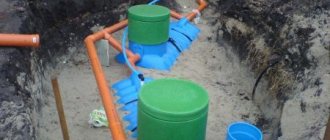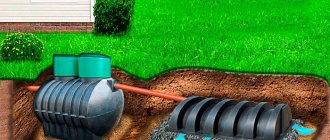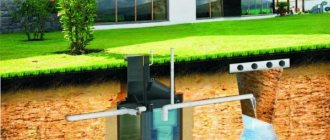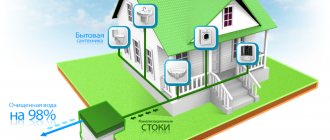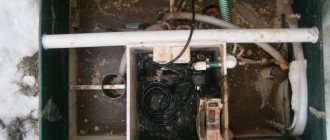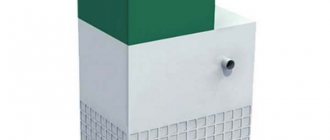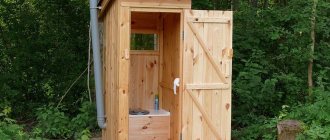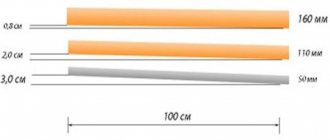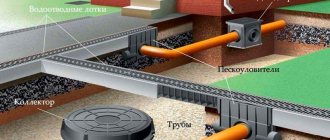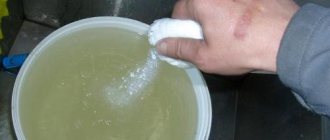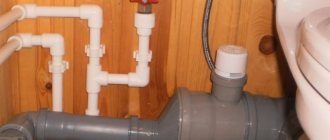Types of reinforced concrete products
Liquid waste can be industrial and domestic. In the first case, the waste is toxic, and disposal is carried out by companies specializing in this.
Contact with some industrial wastes can be fatal. These include emulsion, oil industry products, and radioactive substances. To neutralize such products, combustion reactors, cyclic ovens, and chemical neutralization are used. The hazard class of such waste is from 1 to 5. And their disposal occurs in the presence of special authorities monitoring the process.
Household liquid waste is the waste that is generated in residential buildings that do not have a sewer system. These include wastewater from sanitary facilities. Cesspools intended for the accumulation of waste should be cleaned regularly. Because these wastes can release toxic substances such as ammonia and hydrogen sulfide. If you do not regularly remove and dispose of liquid waste, then underwater waters are also subject to contamination, and subsequently, as a consequence, the environment.
Restoring the absorption capacity of the soil
This method is only relevant for owners of cesspools and homemade septic tanks with an open bottom. In this case, to restore the absorbency of the soil, you will have to flush the sewer, and this is done like this:
- We call a vacuum cleaner and pump out the contents of the cesspool or septic tank.
- We fill the container, but not with fecal waste, but with clean water.
- We let the water sit for a day, during which we do not use chlorine-containing preparations (detergents and cleaners) under any pretext.
- or biological products with an increased dose of such microorganisms. If the drug manufacturer recommends this, we repeat the procedure for 5-7 days.
We can recommend the following options as a starting drug:
Collection of reinforced waste materials
Owners of private houses that do not have a sewer system must equip their area with a cesspool. This is where all household liquid waste is collected. The distance from the living space is five meters if the pit is of standard sizes. If the dimensions of the sump are larger than required, then the distance to it should be greater. The maximum distance to the cesspool is 8 meters.
Storage of reinforced waste products
Liquid waste is stored in cesspools, which are dug in accordance with established standards. If violations were made during the arrangement of the septic tank, this could lead to negative consequences and harm the health of the residents of the house and the environment.
The pit must be covered with a lid to prevent debris from getting in there and to avoid accidents.
Progress does not stand still, and there is a device called a septic tank. This is a factory tank, which is made of plastic or concrete, and is installed as an analogue of a cesspool. It separates waste into liquid and solid, and partially biorefines.
Why is the accumulation of concrete waste in cesspools dangerous?
The accumulation of liquid household waste is dangerous because the substances that can be formed there have a negative impact on human health and the ecosystem. When liquid waste remains in a settling tank for more than the required time, processes begin to occur in it in which parasites and bacteria are formed that pose a danger to all living things. Therefore, if sewage waste accumulates in a cesspool in a person’s house, then the septic tank is under the control of sanitary supervision.
When cleaning and removing the liquid contents of the pit, care should be taken to ensure the safety of workers. There should be no direct contact with faeces during transport.
How to choose the right drugs
Biological cleaning agents have a number of advantages:
- a chemical agent for sewer pits is effective at different temperatures, including negative ones, while the use of biological products is possible only at positive temperatures. During the cold season, chemicals are used;
- chemicals react normally to hard water, chlorine and household cleaners. Bacteria die in such an aggressive environment for them, and their effect is reduced to zero;
- A significant disadvantage of using chemicals is the gradual destruction of the sewage system in the house and the negative impact on the surrounding environment. They have a particularly aggressive effect on metal parts of communications. In this regard, biological products look preferable. They are absolutely safe for human, animal and plant health. In addition, they do not affect metal and concrete in any way;
- the chemistry is toxic, leads to metal corrosion and accumulates in nature over time. Leads to the destruction of beneficial microflora and creates conditions for the proliferation of pathogenic bacteria in the pit.
Important: chemically processed sump waste must be removed from the site and not used as soil fertilizer.
The mechanical method has a number of advantages over other types. The main thing is the lack of manual work. The cesspool is cleaned automatically using special equipment - a sewer truck. This is a truck with a vacuum pump and a sealed tank.
How to remove reinforced concrete and not break the law?
Owners of private territories that do not have a pipeline for sewage disposal turn to specialized companies that have the right to pump out, remove and dispose of reinforced waste. The time frame for completing the pumping procedure and the price are negotiated with the company and a contract is concluded. Pricing policy in a certain region is established by local regulations.
If a company wants to provide sewage disposal services, it must obtain a license. To obtain it, you will need to conduct an inspection and give an opinion to the site where you plan to store reinforced waste materials, assess the level of qualifications of the personnel, and whether specialized equipment is suitable for the job.
A license can be issued for one type of work or for all types:
- Pumping out the liquid product and transporting it to the landfill.
- Disposal.
- Decontamination works.
How to get rid of reinforced concrete?
To get rid of liquid waste, you just need to contact a specialized company, enter into an agreement and wait for the employees to do the work.
Pumping
Liquid is pumped out of the sump using specialized machines that are designed for this purpose. This transport has a tank where the contents of the pit, a hose and a pump are stored until unloading. There is a mark on the tank that indicates that it is full and that work has stopped. The tilt of the body allows you to pour out the entire contents without the help of a pumping unit.
Disposal
Disposal of reinforced waste products occurs as follows: full trucks with waste arrive at the sewer network station. In cesspools, the contents are often mixed with garbage. Therefore, before waste is discharged into the collector, it is mechanically cleaned and washed with technical running water. Next, the product is purified biologically. When clean water remains, it is discharged into wastewater. Disposal procedures must be followed properly to avoid legal or environmental problems.
Recycling
Liquid household waste is also used as fertilizer for drainage of fields. But before this, the waste is processed, all toxic substances are separated and sent for disposal. The fields are filled with already cleaned products. This should be done either in the winter and once, or in the warm season, but twice. After this, in the place where such fertilizer was used, cereals are grown, which are used to feed animals, for safety reasons.
Biological treatment system: advanced sewage system for a private home
The most technologically advanced option for installing a sewer system in a private home is the so-called biotreatment station. In fact, it is the same multi-chamber septic tank with a biofilter, combined into the volume of one underground sewerage installation.
Such a system takes up less space, but also costs more than other autonomous sewerage options. Therefore, biological treatment stations are installed only in the most difficult situations. For example, they are in demand in small areas or in places with unfavorable soil for a cheaper plastic septic tank.
A biotreatment station consists of several chambers where first aerobic and then anaerobic wastewater treatment occurs. Due to the fact that this option of autonomous sewerage works using a compressor, the wastewater is purified by 95-98%.
For a family of 3-4 people, a biorefinery station with a volume of 1.5-2 m3 will be quite sufficient. The size of filtration units for biotreatment stations is also smaller than similar solutions for septic tanks.
However, a decrease in the volume of the system affects the fact that the biological treatment station is filled with the solid fraction of wastewater faster and such installations require more frequent pumping with vacuum cleaners - about 2 times a year.
Price for removal of liquid household waste
In almost every city there is a company that pumps out and removes waste from cesspools. The provision of services depends on various factors, and prices for product removal in different regions may vary.
The cost of the procedure is set according to the following parameters:
- The volume of the pit containing waste.
- Equipment used for pumping and removal.
- Kilometers to the place where liquid waste is disposed of.
- Processing methods.
The price for cleaning work starts from 800 rubles.
Possible methods for treating wastewater with tablets that decompose solid waste
Technologies developed to date make it easy to cope with the tasks of operating septic tanks and cleaning sewage. There are several of the most effective ways to dispose of waste and treat wastewater in a personal plot:
- The most common and simple one: calling a sewage disposal truck to pump out wastewater.
- Chemicals for septic tanks and cesspools that quickly and effectively disinfect and decompose sewage.
- Biological products for cesspools (septic tanks) - live bacteria for a septic tank are capable of converting household wastewater into a harmless liquid in a matter of hours, which can be used in the future as biofertilizers.
A modern option for liquid waste disposal
A modern disposal option is the installation of factory-made septic tanks. They already have built-in equipment that partially cleans the waste that gets into it. This device is made by analogy with treatment facilities that are installed in industrial organizations. The owners use purified water, which is obtained using a septic tank, for watering plants. And solid waste that remains in the tank is removed much less frequently than concrete waste.
